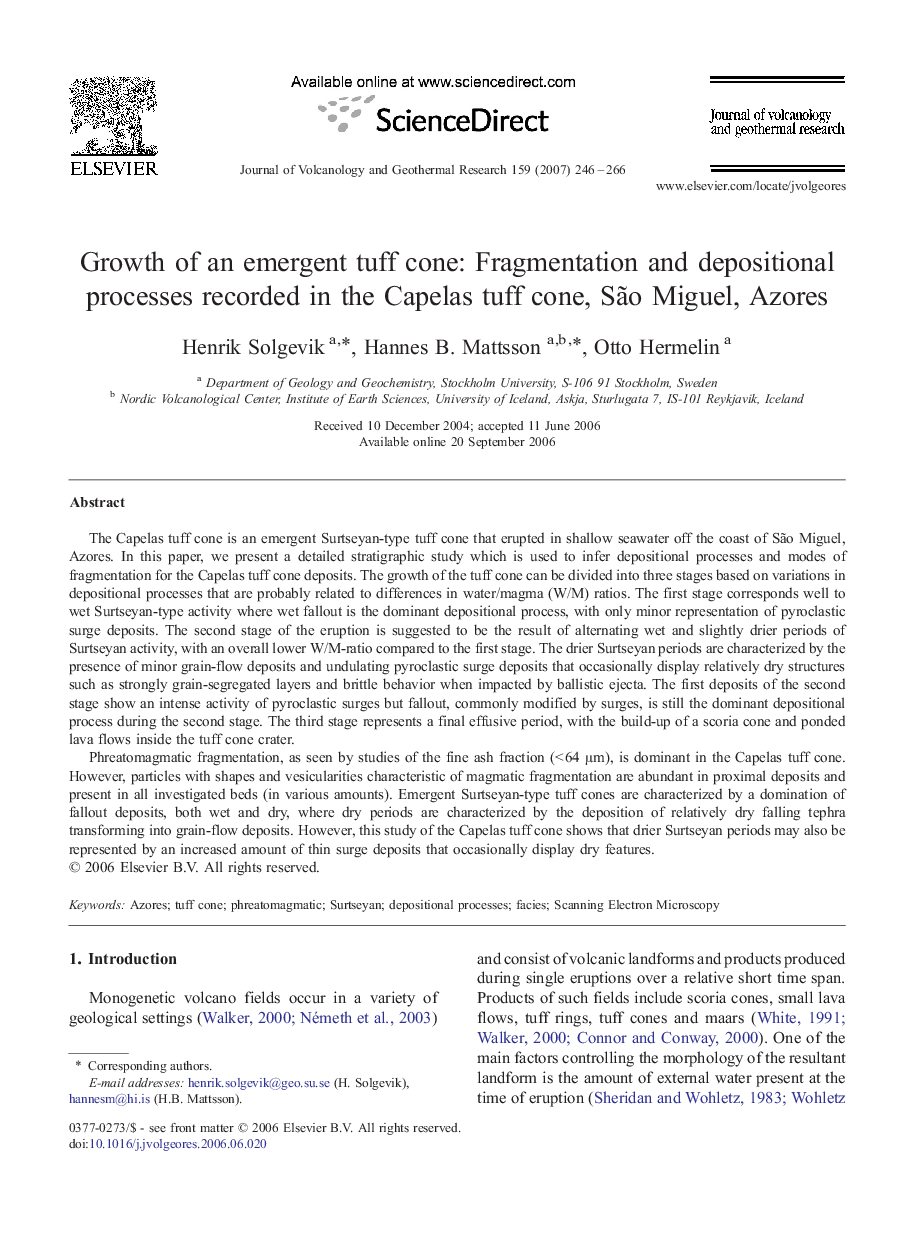| کد مقاله | کد نشریه | سال انتشار | مقاله انگلیسی | نسخه تمام متن |
|---|---|---|---|---|
| 4714119 | 1638469 | 2007 | 21 صفحه PDF | دانلود رایگان |

The Capelas tuff cone is an emergent Surtseyan-type tuff cone that erupted in shallow seawater off the coast of São Miguel, Azores. In this paper, we present a detailed stratigraphic study which is used to infer depositional processes and modes of fragmentation for the Capelas tuff cone deposits. The growth of the tuff cone can be divided into three stages based on variations in depositional processes that are probably related to differences in water/magma (W/M) ratios. The first stage corresponds well to wet Surtseyan-type activity where wet fallout is the dominant depositional process, with only minor representation of pyroclastic surge deposits. The second stage of the eruption is suggested to be the result of alternating wet and slightly drier periods of Surtseyan activity, with an overall lower W/M-ratio compared to the first stage. The drier Surtseyan periods are characterized by the presence of minor grain-flow deposits and undulating pyroclastic surge deposits that occasionally display relatively dry structures such as strongly grain-segregated layers and brittle behavior when impacted by ballistic ejecta. The first deposits of the second stage show an intense activity of pyroclastic surges but fallout, commonly modified by surges, is still the dominant depositional process during the second stage. The third stage represents a final effusive period, with the build-up of a scoria cone and ponded lava flows inside the tuff cone crater.Phreatomagmatic fragmentation, as seen by studies of the fine ash fraction (< 64 μm), is dominant in the Capelas tuff cone. However, particles with shapes and vesicularities characteristic of magmatic fragmentation are abundant in proximal deposits and present in all investigated beds (in various amounts). Emergent Surtseyan-type tuff cones are characterized by a domination of fallout deposits, both wet and dry, where dry periods are characterized by the deposition of relatively dry falling tephra transforming into grain-flow deposits. However, this study of the Capelas tuff cone shows that drier Surtseyan periods may also be represented by an increased amount of thin surge deposits that occasionally display dry features.
Journal: Journal of Volcanology and Geothermal Research - Volume 159, Issues 1–3, 1 January 2007, Pages 246–266